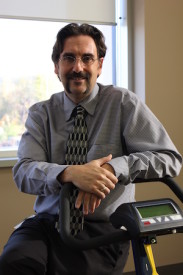


Physical literacy is defined as having the competence, motivation and positive affect to engage in and maintain life-long participation in physical activity. In this webinar, Dr. John Cairney discusses the direct and tangible impacts of physical literacy on brain development and learning. A particular case will be made for the importance of physical literacy to student outcomes in education.
Dr. John Cairney is an associate professor in the Department of Family Medicine and the Department of Psychiatry and Behavioural Neurosciences at McMaster University. His research interests include the physical development in children, particularly in Developmental Coordination Disorder. Dr. Cairney is the first person to be appointed to the McMaster Family Medicine Professorship in Child Health Research.
Part I: Physical Activity
Introducing the modern day concept of what comprises physical activity and drawing a link between physical activity and cognition. (19:09)
Part II: Early
Years
Investigating the early years of brain development in children, explaining why physical literacy is necessary as the base for the progression of fundamental movement skills. (16:29)
Part III: Physical Literacy Programs
Looking at enriched physical literacy programs, their functions, how they encourage movement and motor and social skills. (11:22)